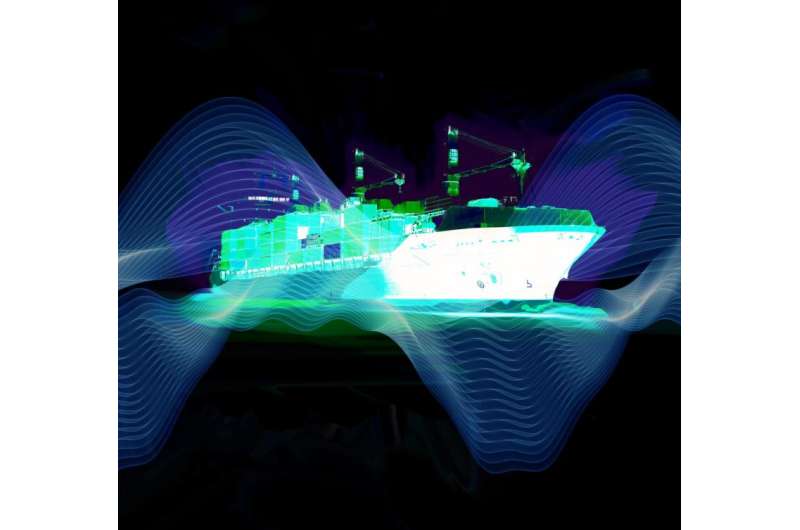Taking the momentum out of vibrations

Diesel engines vibrate. This produces tremendous stress on the components of ships. Adaptronic systems effectively reduce these vibrations. At the maritime trade fair SMM, Fraunhofer researchers are presenting a simulation tool that allows these systems to be developed efficiently: The "Mechanical Simulation Toolbox" is now available on the market and easy to use.
The big container ship slowly departs from the quay. The two-stroke diesel engines boom inside the hull. The powerful 60,000 kilowatt engine makes everything vibrate: the connectors on the engine, the high-pressure pipes for fuel and lubricating oil, the drive train, stairs, steps, floor and ceiling made of steel – everything. The vibrations are transmitted to the entire hull. "A massive problem: The vibrations are not only disturbing; they also damage important components of the ship," says Heiko Atzrodt, researcher at the Fraunhofer Institute for Structural Durability and System Reliability LBF in Darmstadt.
Economise prototypes
Adaptronic systems help to reduce the vibrations. The LBF has written a simulation software with which these systems are developed efficiently. The researchers are presenting the "Mechanical Simulation Toolbox" at the maritime trade fair SMM from September 06 – 09, 2016 in Hamburg."A simulation software for adaptronic systems is available for the first time. To date, there has not been an integrated development process for such systems. Corresponding software has so far only been available as isolated solutions," reports the graduated mechanical engineer.
With the development kit, shipbuilders can easily design adaptronic systems step by step on the computer. "This saves the time and costs involved with expensive prototypes. Subsystems are optimally designed from the very beginning," Atzrodt says, identifying one of the advantages. LBF implements the software and is the service provider. The toolbox is a result of the Hessian research promotion program LOEWE (the State Offensive for the Development of Scientific and Economic Excellence). Partners of the LBF in the adaptive systems project LOEWE Center AdRIA (Adaptronic – Research, Innovation, Application) in Darmstadt are the Technical University and the Darmstadt University of Applied Sciences.
The virtual simulation environment is not limited to the shipping industry. "It can be used wherever that vibrations occur – and it is available immediately," Atzrodt informs.
Passive and active systems
With the software, passive and adaptronic systems for vibration reduction can be simulated on the computer. In passive systems, no additional electrical energy is added. They work solely through their structure. Springs and additional materials, for example, reduce the vibration of bridges and engine or transmission mounts by modifying the transmission paths. "However, these systems have limits which are set precisely for mobile applications, since they cannot be arbitrarily large and heavy," explains Atzrodt. That is where adaptronic systems come into play. These components convert supplied electrical energy into mechanical energy, thereby actively counteracting the vibrations. This makes them more efficient, despite their lower weight and smaller size. The toolbox of the LBF simulates the vibrating and the required adaptronic system. The simulated system can be started up with simple models and made more complex at a later time.
Atzrodt, also the managing director of the Fraunhofer Alliance Adaptronics, in which a total of six Fraunhofer Institutes are organized: "At the LBF, we have been dedicating ourselves for more than 15 years to adaptronic systems and their simulation. We work very closely with the industry. Adaptronics is progressively gaining in importance and the demand for a generally available simulation software has been increasing steadily in recent years. We have therefore used our expertise in the past for developing the required product. Now, it is available on the market."
Provided by Fraunhofer-Gesellschaft


















